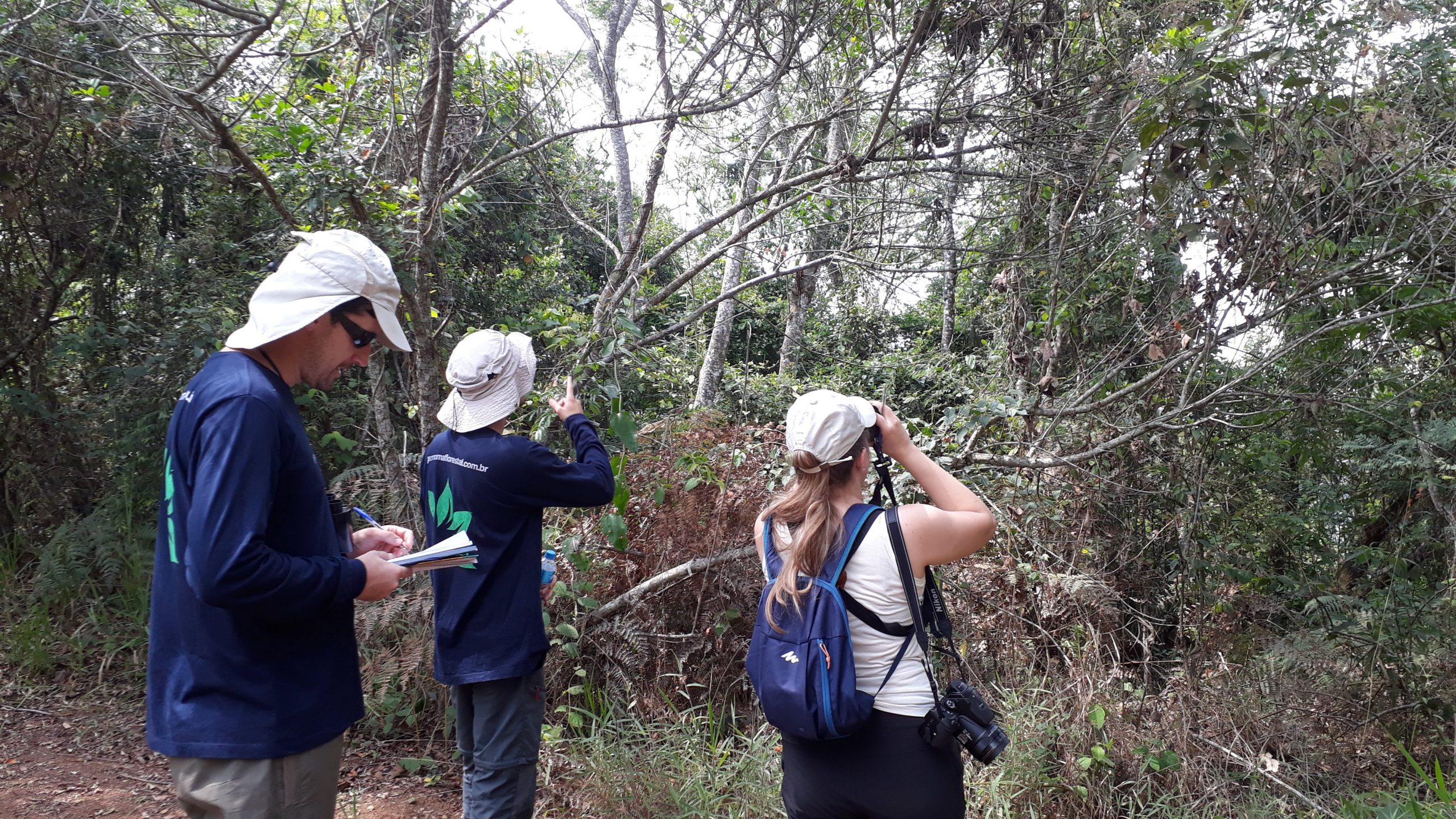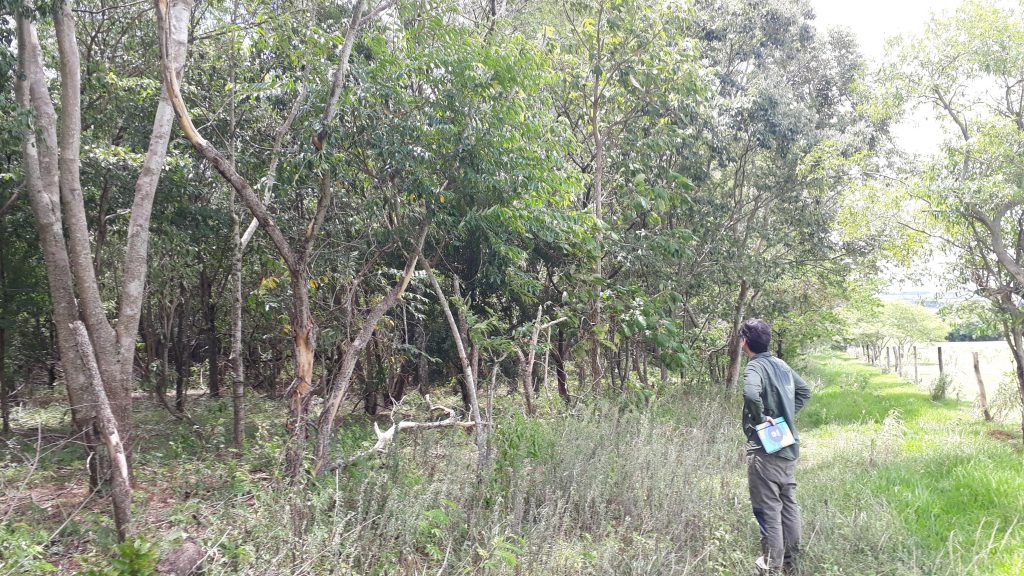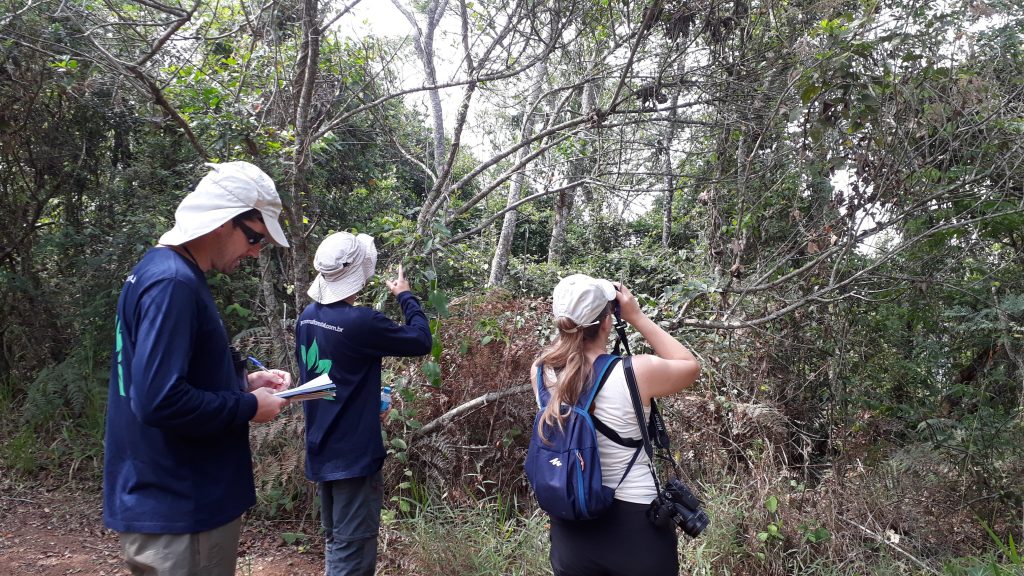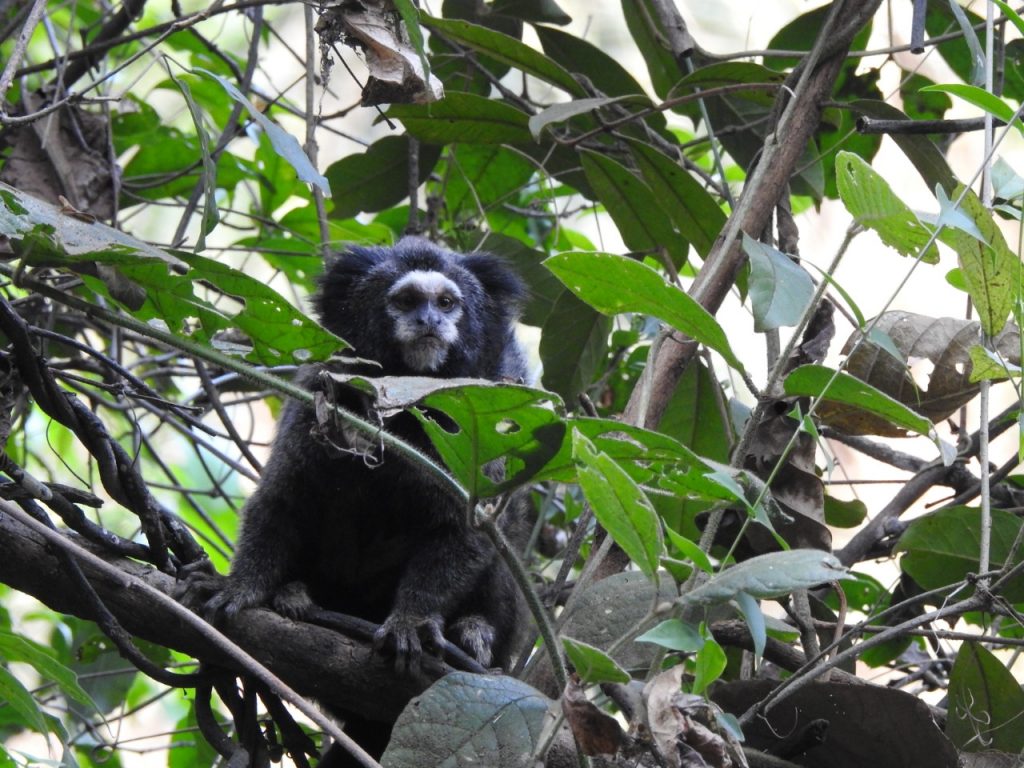Environmental Monitoring and the invasive marmosets

What is Environmental Monitoring?
We can say that environmental monitoring is basically a series of inventories of flora or fauna, carried out with the aim of knowing the biodiversity.
First, it is important to understand that it is impossible to know completely all the elements of biodiversity from an area, especially in regions as complex as tropical biomes. For this reason, something called sampling is applied in these studies of a place and evaluating whether it changes over time.
In order to carry out a sampling of flora or fauna, there are specific inventory and monitoring methods that allow professionals in the environmental area to assess the different aspects of local biodiversity that satisfactorily represents its totality. These are works that require many hours in the field and a reasonable knowledge about identification, taxonomy and ecology of the groups that will be sampled.
That’s why it is important that professionals who carry out this type of survey or environmental monitoring are highly qualified and specialists in their areas of expertise. This ensures more refined and reliable results.
Furthermore, the need for this knowledge becomes even more relevant when we talk about work carried out in the mega diverse tropical biomes that exist in Brazil, such as:
- Atlantic Forest;
- Amazon;
- Cerrado;
- Caatinga;
In the consulting services provided by Geonoma, we always seek the best possible quality, whether in the field, in the analysis of results or on the delivery of the final product.
Among the main areas of knowledge directly involved in environmental monitoring services, we can highlight the following:
- Botany;
- Ornithology;
- Herpetology;
- Ichthyology;
- Mastozoology;
- Environmental education;
- Geoprocessing;
- Waste Management;
When we talk about fauna or flora inventories, we are referring to the most direct and effective way to know part of the biodiversity of a given location. However, to include the time factor in this knowledge, it is necessary to carry out environmental monitoring studies in parallel. .

The importance of monitoring over time
In general, environmental monitoring demands the same knowledge that is needed for a species inventory. The main difference between the two, as already mentioned, is the time scale over the samplings.
While the inventory makes a fixed picture of the richness and diversity of organisms in a given area, that is, on a restricted time scale, monitoring prolongs this process.
Here, environmental monitoring offers several portraits of species composition in the same area over a period of time.
The intervals at which samplings must be resumed by professionals can vary greatly depending on the purpose of the study.
Such samplings may have intervals of:
- Days;
- months;
- Years;
- Combinations of the previous items.
These studies can bring several advantages from a scientific and conservationist point of view, as they allow accessing and understanding a little of the dynamics of ecosystems. The species composition of fauna and flora, as well as their populations, are always changing in density and diversity over time. This happens in every environment on the planet. These changes can say a lot about the conservation status of an area and reflect the presence of potential threats.
That’s why it is important that specialists from different areas of knowledge related to the environment are able to interpret these changes.
The teams formed by Geonoma are made of professionals capable of applying appropriate methodologies for each type of environmental assessment, and the results of these assessments can be used to answer questions associated with the sustainability and maintenance of ecological processes in natural areas.
What questions can environmental monitoring answer?
Flora
Among the many questions that can be answered with monitoring studies, we can highlight, for example, the evaluation of vegetation regeneration dynamics in a given environment.
The eye of an experienced botanist in a long-term study can tell whether the plant species that are growing and developing in a disturbed area are part of stages of ecological succession [external link] that reflect the recovery of that ecosystem or not.
Another important form of evaluation is related to the presence of invasive plant species [external link] in a location, that is, species that are not native and their proliferation adversely affects the native species in the region.
Environmental monitoring can offer subsidies to verify if there is any competition between introduced exotic plants and native plants. If so, monitoring can also reveal how and where the management of invasive species is more urgent, depending on the case.

Fauna
Regarding the fauna, there are other questions that can also be answered with methodologies related to environmental monitoring.
The disappearance or persistence of some animal species in a region can reveal to a fauna specialist whether there is pressure from predatory hunting in the area, which is prohibited by law.
Furthermore, by evaluating the interaction of the animals with the environments where they live, it is possible to say whether they are able to circulate between fragments of forest divided into a discontinuous landscape.
The answer to these questions can help in taking measures to preserve these animal populations, such as, for example, the implementation of fauna passages to avoid roadkill and promote the connection between the fragments.
The presence of diseases or the pollution itself also tend to change the composition of animals and plants in a place.
Knowing how to determine and evaluate what the population fluctuations of bioindicator species mean also ends up reflecting on the well-being of the people themselves, who directly or indirectly share natural resources with these organisms.
The case of hybrid marmosets
Recently, in one of the environmental monitoring projects carried out by Geonoma, our team was faced with a situation that alerted our specialists about possible environmental problems that could be happening in the studied place.
The study in question had been carried out with bimonthly samplings, in a particular area that houses remnants of the Atlantic Forest in the interior of São Paulo.
During one of the campaigns, while the team was recording a group of black-pencilled marmosets (Callithrix penicillata), an introduced species in the region, it was observed that one of the individuals was different, with a strange coat when compared to the others.
Subsequently, it was verified that this individual was possibly a hybrid between a black-pencilled marmoset and the Buffy-tufted-ear marmoset (Callithrix aurita), a native and endangered species.
The evidence that it was a hybrid individual came precisely from the animal's coat, which showed intermediate characteristics between the two species.
.

Invading marmosets documented during environmental monitoring
Since the beginning of the monitoring carried out by Geonoma, our team has recorded groups of black-pencilled marmosets in the region. The black-pencilled marmoset is native to Brazil, but not to this location specifically.
Naturally, this species is native to cerrado areas, with original distribution in the states of Tocantins, Goiás, Bahia, Minas Gerais and São Paulo.
Both the black-pencilled marmoset and another species, native to northeastern Brazil, the common marmoset (Callithrix jacchus), have been introduced in several regions of Brazil that do not correspond to their original distributions.
This happens because these little monkeys are captured in their natural environments and sold through the illegal trafficking of wild animals to people in various parts of Brazil.
People illegally buy marmosets probably because they are very charismatic animals. But some time after the purchase, they discover that these animals are not appropriate to serve as "pets".
Confined marmosets can become stressed and become aggressive when not handled properly, even biting and injuring their keepers. These are animals that require a balanced diet, make a lot of mess, noise and live for a long time.
Faced with these unexpected "inconveniences", these people end up releasing the marmosets anywhere, introducing them to environments where they are not native.
So, without the adversities that their original environments would offer, such as predators, competition and resource limitations, these marmosets end up surviving and proliferating uncontrollably.
The problem is that these animals can cause great damage to local biodiversity.
Among the main impacts that can cause are:
- Predation of native bird nests;
- Competition for resources with native species;
- Transmission of new diseases;
- Generate hybrids with native species.
The threat to native marmosets
In southeastern Brazil, in specific regions such as the east of the State of São Paulo, the Pontal do Paranapanema, the basin of the Ribeira do Iguape River, and specific locations in RJ and MG, there is another native and very interesting species of native marmosets.
This species, known as marmoset, is endemic to the Atlantic Forest, only lives in forested areas and is classified as "endangered" of extinction by the International Union for Conservation of Nature (IUCN) .
This means that the populations of this animal are being worryingly reduced, to the point of being considered today as one of the 25 most endangered primate species in the world. According to ICMBio , the species may have lost at least 50% of its entire population in the last 18 years alone.
The main reasons for the current situation of conservation of the common marmoset are the fragmentation of habitats, the recent outbreak of yellow fever in 2017 and hybridization with introduced marmosets.
It was precisely one of these cases of hybridization that was documented by the Geonoma team during monitoring.
The main problem with these crosses between species of marmosets is the loss of genetic diversity suffered by the common marmoset, which is already so endangered.
This situation can greatly accelerate the process of extinction of the species, since there are invasive marmosets introduced throughout its punctual distribution area.
The accelerated proliferation of introduced marmosets and the increase of hybrids in so many natural areas, show us that there is a great risk for the conservation of the wild marmoset and this knowledge acquired through environmental monitoring is essential to devise strategies to save this species.
Do you understand how counting on the support of well-trained and prepared professionals can make all the difference in the Environmental Study you need to prepare?! Learn more about Geonoma's work and get in touch!



